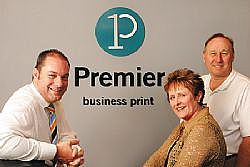Cover Story: Trekking the time zones
To succeed at exporting just get out there and do it. Kevin Kevany talks to established and emerging exporters who are boldly entering new markets.
We are almost at the halfway mark in Export Year 2007 – a good time to catch up with some of our SME exporters to see how things are going. This article was written in the wake of the interest rates nudging up another tad and the Kiwi dollar touching new highs against its US counterpart.
A couple of the big players were going offshore and others threatened to do so, but in the SME sector it was simply a case of “just GO”. Prime Minister Helen Clark also dipped her toe into the debate saying that the future for New Zealand lay in the field of design, research and development, and niche products. She might have even been talking to the same people we did, because she stressed high-value design, R&D, branding and bringing the export revenue home were key factors in the new global dispensation for a country (and companies and individuals) far from the main markets.
Based on what we encountered, our SME sector is delivering on all of the above – and some. Smart companies are exploiting (in the best sense of the word) the New Zealand image in the world, our icons and our traditions, but they are also looking beyond that to assemble the best of what is out there and present it in an irresistible way. Yes, we are still mirroring the pure, the green and the black (All Blacks, that is), but are conscious that the game is now global and ‘niched’, and quaintness has a short season. We are largely targeting the top-end of the markets we export to, since that is where the money is – unit costs and transport costs are “all in there somewhere”, but those monied customers never ask.
Innovation, allied to great and often-daring design, is a watch-word. Products and services across the board are being developed in garages and lofts in scores of New Zealand homes and in businesses everywhere, and going global.
The politicians and those charged with balancing the books should be pleased that the money is coming back and being re-invested in growth. Expansion seems to be self-financed to a point that the money-lenders might have cause for concern. People who work damn hard, travel an enormous amount and have sacrificed a good deal of their family and leisure time are not about to make their banks “partners”, unless they really have to.
The partners they want are the door-openers in their targeted markets, the great designers and idea-people who provide contracted services, and the distributors who carefully move precious goods to the customers’ doors in almost any part of
the world.
Our winning exporters are too busy, spending time getting around the world regularly and maintaining their enthusiasm as they build successful networks that provide the growth. It’s not a sector for the faint-hearted, the nine-to-fivers and those that like to “chill” on the weekend. This is worse than 24/7, because the hours get taken off and added back on as they skip across the time zones like hopscotch players. Don’t mention work/life balance to most of them – they’re too busy to even consider it an issue.
But you get a feeling they are all enjoying themselves and bringing in the dollars. The export market right now seems to be attracting those that get as much satisfaction out of seeing their products in an upmarket store (that they would like to shop in) as in banking the cheque at the end of the month. They are attracted to the glamorous and the famous, who in turn seem to be taken with their new Kiwi mates.
The “e” in export is definitely for energy. And that is positive energy: you cannot get a bad word out of them on Export Year 2007, New Zealand Trade and Enterprise, or Export New Zealand either. They simply don’t have the time or the (negative) “energy” for it.
If you are thinking they must be too good to be true, and you have to generalise on this, as a group they are taking some really hairy risks to move to the next level, to break into a hitherto sacrosanct area: think 42 Below vodka cracking the elite bars in New York.
Some are creating multi-million dollar businesses out of importing, adding-value – and sometimes simply placing the order on a Chinese manufacturer and delivering it FOB to distributors and clients with the right promotional material and Kiwi hype. It would seem that there has been a substantial increase in high-quality promotional material and point-of-sale collateral leaving our shores to bolster the positioning of a number of emerging top-end products too.
Global sister act
Poster gals for Export Year 2007, the glamorous sisters Catherine de Groot and Sarah Gibbs of Trilogy Skincare in Wellington, who feature in an ad campaign for the project, know a thing or two about product positioning and having the confidence to aim for the top – and succeed. They went global from the start and did not try to use their New Zealand roots to crack the market.
From the outset they not only made sure that their natural skin-care products conformed to regulations in their target markets, but they also ladled on the investment in quality design and packaging, a big factor in supporting the “impulse to buy” amongst the well-to-do ladies they had in mind.
They were smart enough too, not to try and do it all. They searched, researched and found the right distributor in each market and were never afraid to pull in help wherever they felt they weren’t sufficiently expert or experienced. And it has paid off. A browse in the vast cosmetic halls of Harrods, Myer stores and the like will find their elegantly simple packaged products lining the shelves.
“Our products and our inspiration are drawn from all over the world. People don’t wake up in the morning in the UK and say: ‘Oh, I really would like to buy a skincare product totally made in New Zealand this morning’,” says de Groot.
Classy-clinical packaging, the promise of natural beauty, ethical testing and general product integrity are all part of the Trilogy “foundation”. None of that is a state secret – it’s just that the two sisters had the gumption, fortitude and style to bring it off.
Not for them the helter-skelter 24/7
lifestyle either.
“We are very much into downtime, because that is when we get the inspirational and cerebral stuff that really delivers, but we both invest a lot of time and strategy on customer relationships,” says de Groot.
“We have been careful to pitch Trilogy as an international supplier, but once people get to know us we are obviously Kiwis and I suppose you could say the ‘pure’ and ‘clean-green’ probably have some kind of reinforcing factor. Sometimes it’s the fact that we are two sisters working
side-by-side.”
So has it all been plain sailing?
“Hardly, we make lots of mistakes and spend a lot of time picking ourselves up, dusting down and getting back up and at it.”
Brainy textiles
We all revel in the tales of Kiwi high-tech ingenuity – the number8 wire, digitised. That said, the static crackle surrounding Auckland-based Zephyr Technology’s exhibit at Hannover’s CeBIT, Europe’s largest hi-tech trade show, certainly marked them as another potential Kiwi icon. A recent feature on the BBC News website gave the brainy textiles star billing, leading to more than 9000 hits in a day and queries and potential opportunities (as reported in May’s NZBusiness).
Steven Small, director of business development for Zephyr Technology, says the launch of the ‘Smart fabric’ which gathers information on heart-beat, skin temperature, posture, activity and breathing rate (when against the skin) had started to pay dividends. And when he indicated that the US military had signed a deal with Zephyr to provide products to its Special Forces, the CeBIT punters’ imaginations ran riot with other potential applications. Special Forces’ commanders will be able to monitor the physiological state of their men – how they were coping during combat situations – something that officers through the ages could only guess at. It can also provide “ballistic impact detection”.
Wouldn’t Graham Henry love to have it stitched into the opposition jerseys at the Rugby World Cup?!
“Zephyr has also clinched the “best in show award” award at the LARTA conference in San Francisco – it brings together emerging companies with US venture capitalists and private equity firms, in early May each year,” adds Small.
Founded in 2003, Zephyr has targeted two of its patented products – the BioHarness (a length of fabric worn around the chest) and the ShoePod or ‘smart insole’ – at the health, defence and medical markets. They could also be used by athletes to hone their performance, or even be used to test the reaction of those undergoing drug tests to record their responses to new medicines.
The ShoePod measures a person’s stride, highlighting where they place the most pressure. It might also aid those recovering from operations to replace a knee or hip, as they adjust. Diabetics will be catered for with an advanced ShoePod.
The Smart fabric story is yet another example of a company taking an existing product out of the laboratory, adding value, finding the applications and markets; and then the tough bit – finding the right partners to strike OEM and licensing agreements.
Both the BioHarness and the ShoePod are made of a patented textile that has the sensors woven into it. Once integrated with storage and broadcast electronics, the fabric gets on with the job of capturing vital physiological information. Currently the material can record a month’s worth of data or transmit it as it is gathered to a nearby storage device.
Small believes the next barrier could be overcome by using Bluetooth technology to connect it to a mobile.
That’s when it might pay them to talk to Wellington-based Fronde Systems Group.
Banking on worldwide success
The name ‘Fronde’ is derived from the French word meaning ‘a sling’; which in today’s Europe has evolved to symbolise “the spirit that inspires a challenge to orthodox thinking and provokes change”. Fronde Systems Group (formerly Synergy International) is headed up by highly-experienced, international business people in tune with the global challenge. (They will also point out that the name suggests the iconic Kiwi fern: the best of both worlds.)
Fronde, a mobile banking solution specialist, having proven itself in the local market with Kiwibank, has just “gone global”, adding a New York office to its first steps into the world – Singapore and London.
The company has a simple and effective message: “We care more about mobile business than mobile technology”. Working with its partners, Fronde blends its broad expertise in technology implementation and ‘business change’ management.
May 2007 was a huge month for the company as it launched its mobile banking, payment and two factor authentication solution, ‘TwoSecure’, worldwide. To catch up with Caroline Dewe, their executive vice-president, products and marketing, it was a case of: “if you don’t get me tonight in London, try Paris tomorrow or New York later in the week”. Even late at night, after a series of London launches, the energy and enthusiasm to talk about Fronde Anywhere was electric.
“The clear business benefits of mobile banking should make Fronde anywhere a top priority for banks everywhere. By embracing mobile banking now and getting it right, banks can not only win and retain customers, but they are also better placed to set the agenda for mobile payments, which is where the market is ultimately heading,” says Dewe.
She credits the high uptake of Kiwibank mobile banking for paving the way into the world. Certainly the bank is impressed. To quote Steve Ferguson, general manager distribution at Kiwibank: “The uptake of these services has been phenomenal. By enabling us to provide easy-to-use, full featured mobile banking, their technology has helped us establish us as an innovative market leader.”
Greatly prized by users is the ability to automatically make payments. The banks like it because their branding comes shining through, while their operational costs are cut by eliminating a significant proportion of inbound contact centre calls, and increased revenues.
Licensed to grow
New Zealand Sports Merchandising (NZSM), based in Auckland and founded in 2001, is today turning over $5 million a year specialising in sports and fashion licensed merchandise. And the company’s growth has all been self-financed.
NZSM enjoys a unique position based on holding exclusive worldwide rights for brands like the All Blacks, Rebel Super 14, the Classic ABs and, more recently, the Rachel Hunter swimwear brand, Lola.
The company has recently cracked the fashion-conscious markets of France and Italy and is now looking to Japan where the likes of Andrew Mehrtens, Jonah Lomu and Carlos Spencer are to be featured as Classic All Blacks to play Japan in two matches mid-year.
“As the Rugby World Cup draws near, Japanese interest in rugby is reaching unprecedented levels and merchandising opportunities in the Asian region are set to expand. With the exception of adidas International BV, NZSM is the largest New Zealand Rugby Union licensee and a vital part of the domestic and international licensing programme,” says Megan Walls, director and designer for NZSM.
Rachel Hunter’s new Lola swimwear range was given a high-profile launch in March 2007. The range, which is “designed to bridge the gap between the swimwear women were being offered and what they were seeing in high fashion magazines”, will be available at specialist swimwear and department stores throughout Australasia from July.
“One of our key strengths is the strong relationships we hold with our suppliers,” says Walls, “largely offshore factories and local agents.”
Another strength is their cautious commitment. Even after three successful years in the game, NZSM spent nearly two years designing, testing and developing the Lola range with Rachel Hunter and a team of specialists, including a Chinese swimwear factory (which manufactures La Perla, XOXO, and other high profile brands).
“There are, without doubt, considerable difficulties and challenges in expanding internationally, so we decided it was essential to accurately establish the demand for the merchandise and secure the best partners possible in each territory – and then ‘Go for it’.
“Needless to say, there have been a lot of new ‘learnings’, as we call them, and I am sure there will be many more before it becomes second nature,” adds Walls.
While emerging Kiwi exporters continue to learn, it would seem that the sector must prosper. NZB
Websites relevant to this article:
Trilogy – www.trilogyproducts.com
Zephyr – www.zephyrtech.co.nz
Fronde – www.fronde.com
NZSM – www.lola.co.nz
NZTE – www.nzte.govt.nz
Kevin Kevany is an Auckland-based freelance writer. [email protected]



